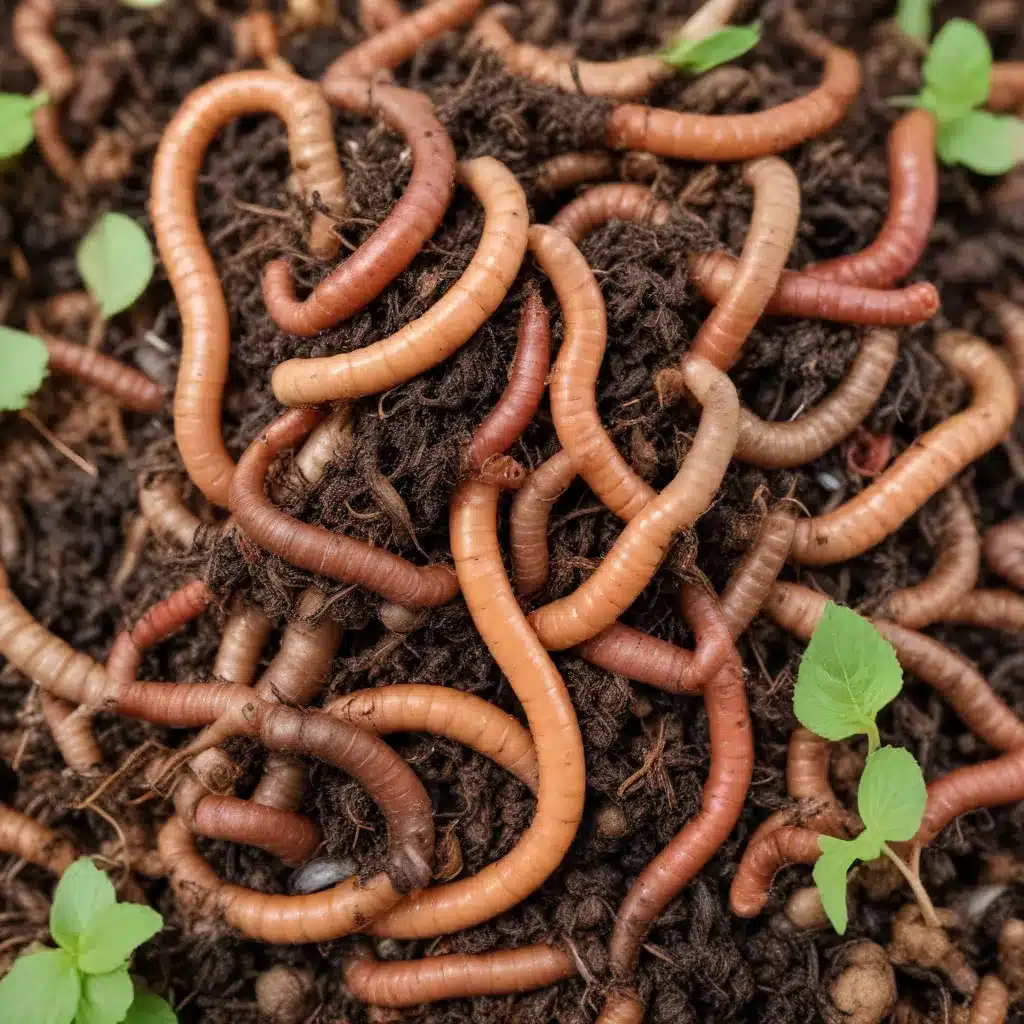
At Crooked Pines Farm, we’re always searching for innovative ways to enhance the vitality of our soil and gardens. One of our favorite methods is vermiculture – the art of composting with the help of hard-working worms. Join us for an in-depth vermiculture workshop where we’ll dive into the incredible benefits of these little decomposers and learn how to harness their power to create nutrient-rich soil.
Vermiculture Fundamentals
What is Vermiculture?
Vermiculture, also known as vermicomposting, is the process of using earthworms to convert organic waste into a valuable soil amendment called vermicompost or worm castings. These worms, often referred to as “red wigglers” or “composting worms,” have an insatiable appetite for decaying plant matter and food scraps, turning them into a nutrient-dense fertilizer that can work wonders for your garden.
Benefits of Vermiculture
The benefits of incorporating vermiculture into your farm or garden don’t stop at just creating nutrient-rich compost. By harnessing the power of these amazing decomposers, you’ll also:
- Reduce Waste: Divert food scraps and other organic materials from landfills, where they would otherwise release harmful greenhouse gases.
- Improve Soil Quality: Vermicompost is packed with essential macronutrients (nitrogen, phosphorus, potassium) and micronutrients that plants crave, as well as beneficial microorganisms that enhance soil structure and fertility.
- Enhance Plant Growth: The nutrient-dense vermicompost and compost tea (a liquid extract) can be used to fertilize your plants, promoting robust growth and increased yields.
- Manage Pests & Diseases: Vermicompost and compost tea act as natural pesticides and fungicides, helping to ward off common garden pests and diseases.
- Save Money: By creating your own source of nutrient-rich compost, you can reduce or eliminate the need for costly commercial fertilizers.
Vermiculture Principles
At the heart of vermiculture is the understanding that worms are nature’s premier decomposers. As they consume organic matter, they break it down into a nutrient-rich “black gold” that can be easily absorbed by plant roots. The worms’ digestive process also helps to aerate the soil, improve drainage, and foster a thriving microbial community.
Preparing for a Vermiculture Workshop
Composting Basics
Before we dive into the specifics of vermiculture, it’s important to have a solid understanding of the broader concept of composting. Composting is the natural process of breaking down organic materials, such as yard waste and food scraps, into a nutrient-rich soil amendment. This can be done with or without the help of worms, but vermiculture takes the process to the next level.
Worm Selection
The key to successful vermiculture is selecting the right type of worms. The most common and widely used species for composting are red wigglers (Eisenia fetida) and European nightcrawlers (Eisenia hortensis). These worms thrive in the warm, moist environment of a worm bin and can quickly consume large amounts of organic material.
Worm Bin Setup
To get started with vermiculture, you’ll need to create a dedicated worm bin or vermicompost system. This can be as simple as a plastic storage bin with drainage holes or a more elaborate, tiered setup. The key is to provide the worms with the perfect balance of moisture, airflow, and food sources to keep them happy and productive.
Vermiculture Techniques
Feeding the Worms
Worms are omnivores and will happily feast on a wide variety of organic materials, including fruit and vegetable scraps, shredded paper, and even coffee grounds. It’s important to maintain a balanced diet for your worms, avoiding foods that are too acidic or that could attract pests. Regularly adding a mix of green (nitrogen-rich) and brown (carbon-rich) materials will keep your worms well-fed and thriving.
Maintaining Optimal Conditions
Worms are sensitive to their environment, so it’s crucial to monitor and maintain the ideal conditions in your worm bin. This includes maintaining the appropriate moisture level, ensuring proper aeration, and keeping the bin out of direct sunlight. By creating a cozy, worm-friendly habitat, you’ll maximize their composting productivity.
Harvesting Vermicompost
As the worms continue to work their magic, you’ll eventually need to harvest the finished vermicompost. This nutrient-dense material can be easily sifted or separated from the worms, who will continue to work in the bin. The resulting vermicompost can then be added directly to your garden beds, mixed into potting soil, or steeped in water to create a powerful compost tea.
Healthy Soil Through Vermiculture
Soil Nutrient Enrichment
Vermicompost is packed with essential plant nutrients, including nitrogen, phosphorus, and potassium, as well as a host of micronutrients. By incorporating this “black gold” into your soil, you’ll be providing your plants with a steady, balanced supply of the nutrients they need to thrive.
Soil Structure Improvement
In addition to the nutrient boost, vermicompost also helps to improve the physical structure of your soil. The worms’ burrowing activities create channels that enhance aeration and water infiltration, while their castings help to bind soil particles together, improving soil tilth and water-holding capacity.
Soil Microbial Activity Enhancement
Perhaps one of the most significant benefits of vermiculture is its ability to stimulate the growth of beneficial soil microorganisms. The vermicompost is teeming with a diverse array of bacteria, fungi, and other microbes that help to break down organic matter, fix atmospheric nitrogen, and outcompete pathogenic organisms.
Ready to get started with vermiculture and experience the power of worm-powered composting? Join us for an upcoming workshop at Crooked Pines Farm, where we’ll guide you through the process of setting up your own worm bin and harnessing the magic of these incredible decomposers. Visit www.crookedpinesfarm.com to learn more and sign up today!


